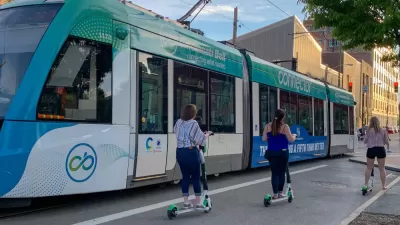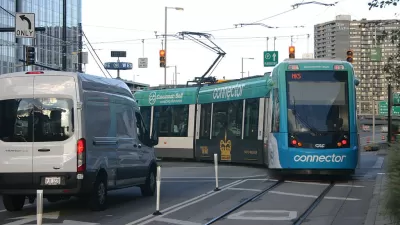A writer examines what it's like to live in the suburbs and work in the city of Cincinnati—to "exist in the physical and social margins" yet still play an active role in shaping the city's identity.

"I fancy myself a type of hipster homesteader," says Jenny Ustick in introducing a longread on the many dynamics of living in the suburbs of eastern Cincinnati.
A few highlights, by way of introducing this compelling article that describes changing times in Cincinnati:
"On a recent drive home, as warmth from my car’s engine was finally reaching my toes and I was putting distance between myself and the city, I realized that there is something similar about us commuters and the way the heat in my car works: convection. We move fluidly (and sometimes not so fluidly) in and out of the city limits, from neighborhood to neighborhood, through cuts in the rolling hills and in all the cardinal directions. It is a cycle, an exchange of capital, of information, and ideas. We leave our contributions, and we get things in return. And it’s not just true of me and my job and my automobile, but the history of the city and the people who have built its character."
"We do ourselves a disservice by tying assumptions about one’s philosophy, allegiance, or usefulness to proximity. I don’t have to live in the city proper, or want to, in order to do good work in the city. You don’t have to live in the suburbs. You don’t have to want to live in the suburbs. Neither of us should hold that against one another. In fact, you might be surprised at how much we have in common."
The article also includes analysis of the Cincinnati streetcar controversy, gentrification, and climate change.
FULL STORY: Neither Created Nor Destroyed

Planetizen Federal Action Tracker
A weekly monitor of how Trump’s orders and actions are impacting planners and planning in America.

Restaurant Patios Were a Pandemic Win — Why Were They so Hard to Keep?
Social distancing requirements and changes in travel patterns prompted cities to pilot new uses for street and sidewalk space. Then it got complicated.

Maui's Vacation Rental Debate Turns Ugly
Verbal attacks, misinformation campaigns and fistfights plague a high-stakes debate to convert thousands of vacation rentals into long-term housing.

In California Battle of Housing vs. Environment, Housing Just Won
A new state law significantly limits the power of CEQA, an environmental review law that served as a powerful tool for blocking new development.

Boulder Eliminates Parking Minimums Citywide
Officials estimate the cost of building a single underground parking space at up to $100,000.

Orange County, Florida Adopts Largest US “Sprawl Repair” Code
The ‘Orange Code’ seeks to rectify decades of sprawl-inducing, car-oriented development.
Urban Design for Planners 1: Software Tools
This six-course series explores essential urban design concepts using open source software and equips planners with the tools they need to participate fully in the urban design process.
Planning for Universal Design
Learn the tools for implementing Universal Design in planning regulations.
Heyer Gruel & Associates PA
JM Goldson LLC
Custer County Colorado
City of Camden Redevelopment Agency
City of Astoria
Transportation Research & Education Center (TREC) at Portland State University
Camden Redevelopment Agency
City of Claremont
Municipality of Princeton (NJ)




























